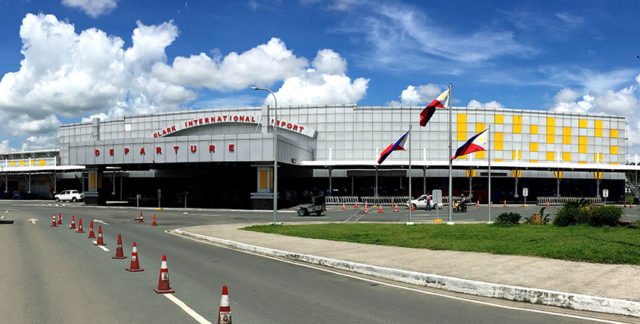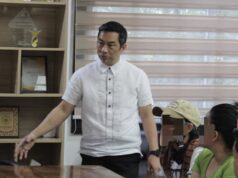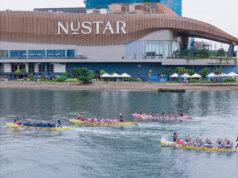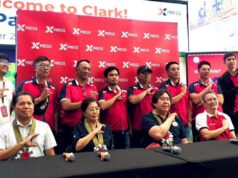(Photo grabbed from waytogo.cebupacificair.com)
DIOSDADO MACAPAGAL INTERNATIONAL AIRPORT – The Clark International Airport Corp. (CIAC) has announced the clearing of informal settlers (squatters) occupying lands within the Clark civil aviation complex.
In an official statement on Wednesday, the CIAC said the area is where private company GMR-Megawide will build the access road network for this airport’s new passenger terminal building project.
The occupied area, known as Group 4, is located along the north side of the airport’s existing passenger terminal and alongside the Mabalacat City road and the old “Ammo Dump,” CIAC statement said.
The CIAC also said its Committee on Informal Settlers (CIS) will begin the process of clearing the informal settlers “after exhausting all legal remedies, including a series of dialogues and notices through the years.”
The CIS was created by CIAC management in August 2016 and is composed of heads of the Aviation Security Department, Emergency Services Department, Airport Operations and Management Group, Community Relations Department, Safety and Environmental Management Office, and the Corporate Communications Office along with representatives from the Bases Conversion and Development Authority, Philippine National Police Aviation Security Command and GMR-Megawide.
It was also stated that the CIAC-CIS will seek the assistance of the local government unit of Mabalacat City, especially its social welfare desk, and of the Clark Development Corp. (CDC) in augmenting CIAC’s security personnel.
It can be recalled that numerous dialogues were conducted by CIAC with the informal settlers since 2009 in the hope arriving at “amicable settlements,” but to no avail. Several notices of eviction were also served to heads of families in the occupied areas.
Top CIAC management reiterated that the land occupied (approximately 12 hectares) at present is part of the Clark Freeport Zone and not “agricultural land” and the settlers present there are “not farmers.”
The CIAC management also said this time, these informal settlers may have to relocate elsewhere as they have been unlawfully occupying and even profiting from their crops, livestock and fruit-bearing trees using government-owned lands for several years now.
CIAC said the continuing increase of activities in the said areas pose serious hazard to airport operations as farm produce attract birds which heighten the likelihood of bird strikes especially now with more than 440 flights per week.
The CIAC management also gave clear instructions to the CIS and to all those involved in the process to exercise maximum tolerance and to ensure the orderly manner of clearing operations.
Meanwhile, the CIAC-CIS created a policy, which was approved by the CIAC Board, for the grant of financial assistance to the affected informal settlers in reference to a previous policy implemented by CIAC in 2009 when it cleared informal settlers in the area of Industrial Estate (IE)-5, now occupied by the Clark Global City.
It was also reported years ago that millions of pesos were granted to several farmers who were tilling lands inside the civil aviation complex after they agreed to leave.
In 2009, some of these settlers received financial assistance from CIAC after a thorough evaluation by the Department of Agriculture (DA) and the Department of Environmental and Natural Resources (DENR) of the produce (fruits and crops) in the said areas. They were also made to sign a “quit-claim” which states that they are to vacate the premises and together with their families are prohibited to plant trees and crops within the entire Clark Freeport Zone.
In 2017, the affected informal settlers, represented by their association CABCOM, sought the assistance of the Department of Agrarian Reform (DAR) and conducted a series of dialogues with CIAC and BCDA to discuss, among others, the valuation of compensable trees, a separate financial assistance on the land occupied by informal settlers, and CIAC’s standing policy on prohibiting the entry of farm equipment and machineries on the affected areas, and CIAC’s off er of financial assistance.
The clearing process started in November 2017 with CIAC’s payment of financial assistance based on a Board-approved policy. But while the process was ongoing an issue came up whether the settlers are qualified to be recipients of financial assistance in spite of being actual relatives of informal settlers who previously benefited from CIAC’s financial assistance (clearing of IE-5) and who signed the quit claim in 2009.
CIAC said it then sought the opinion of the Office of the Government Corporate Counsel (OGCC) who gave an opinion on September 7 that affected informal settlers are qualified to receive their respective financial assistance despite their relatives having signed quit claims in 2009.





